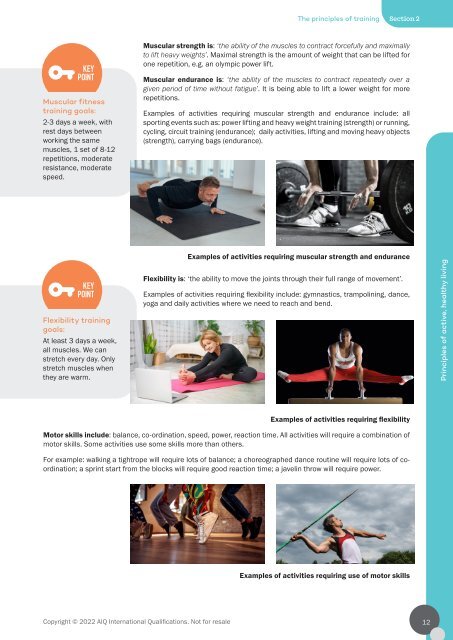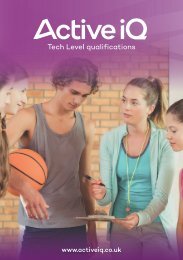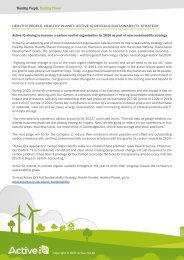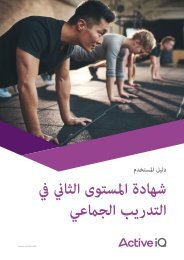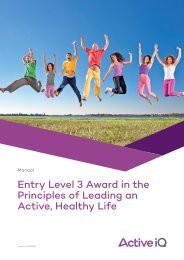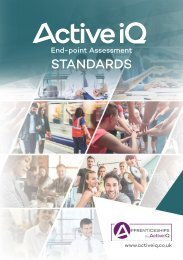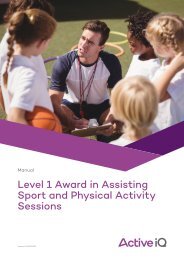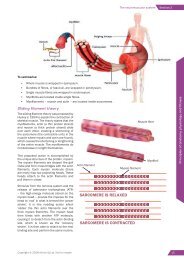You also want an ePaper? Increase the reach of your titles
YUMPU automatically turns print PDFs into web optimized ePapers that Google loves.
The principles of training<br />
Section 2<br />
KEY<br />
POINT<br />
Muscular fitness<br />
training goals:<br />
2-3 days a week, with<br />
rest days between<br />
working the same<br />
muscles, 1 set of 8-12<br />
repetitions, moderate<br />
resistance, moderate<br />
speed.<br />
Muscular strength is: ‘the ability of the muscles to contract forcefully and maximally<br />
to lift heavy weights’. Maximal strength is the amount of weight that can be lifted for<br />
one repetition, e.g. an olympic power lift.<br />
Muscular endurance is: ‘the ability of the muscles to contract repeatedly over a<br />
given period of time without fatigue’. It is being able to lift a lower weight for more<br />
repetitions.<br />
Examples of activities requiring muscular strength and endurance include: all<br />
sporting events such as: power lifting and heavy weight training (strength) or running,<br />
cycling, circuit training (endurance); daily activities, lifting and moving heavy objects<br />
(strength), carrying bags (endurance).<br />
KEY<br />
POINT<br />
Flexibility training<br />
goals:<br />
At least 3 days a week,<br />
all muscles. We can<br />
stretch every day. Only<br />
stretch muscles when<br />
they are warm.<br />
Examples of activities requiring muscular strength and endurance<br />
Flexibility is: ‘the ability to move the joints through their full range of movement’.<br />
Examples of activities requiring flexibility include: gymnastics, trampolining, dance,<br />
yoga and daily activities where we need to reach and bend.<br />
Principles of active, healthy living<br />
Examples of activities requiring flexibility<br />
Motor skills include: balance, co-ordination, speed, power, reaction time. All activities will require a combination of<br />
motor skills. Some activities use some skills more than others.<br />
For example: walking a tightrope will require lots of balance; a choreographed dance routine will require lots of coordination;<br />
a sprint start from the blocks will require good reaction time; a javelin throw will require power.<br />
Examples of activities requiring use of motor skills<br />
Copyright © 2022 AIQ International Qualifications. Not for resale 12


